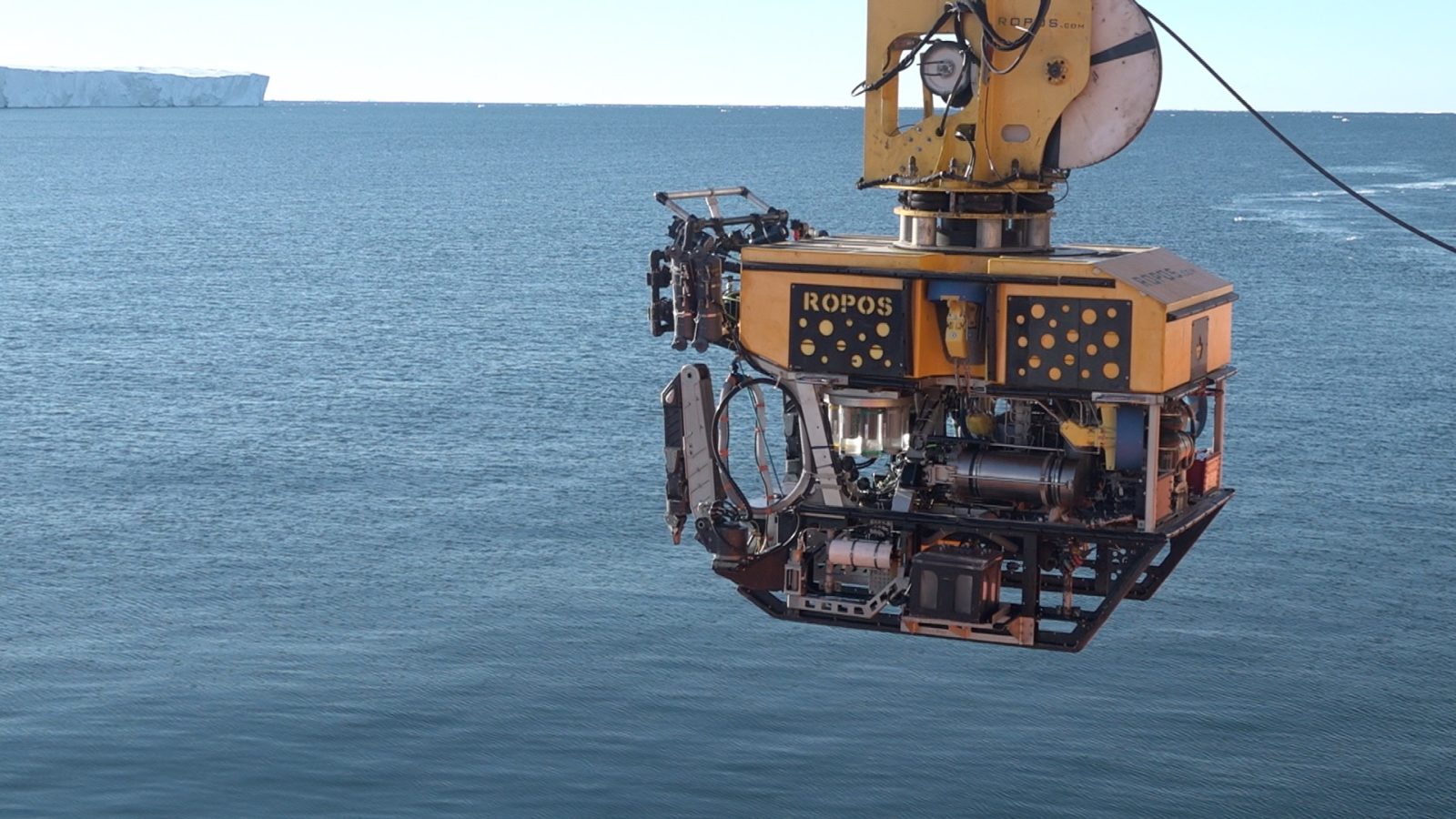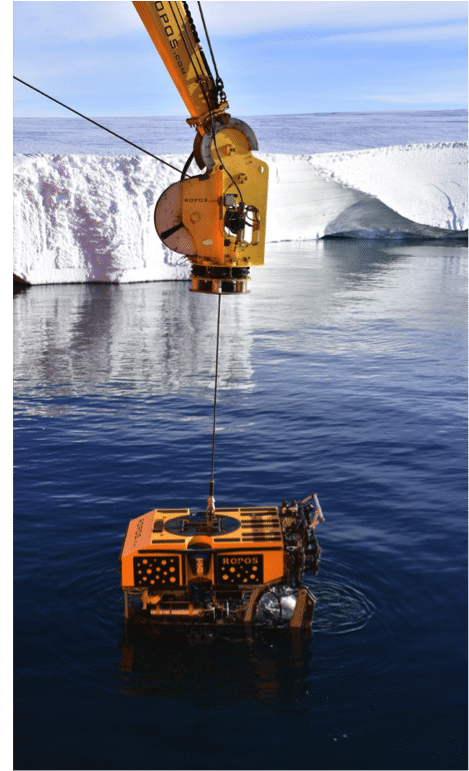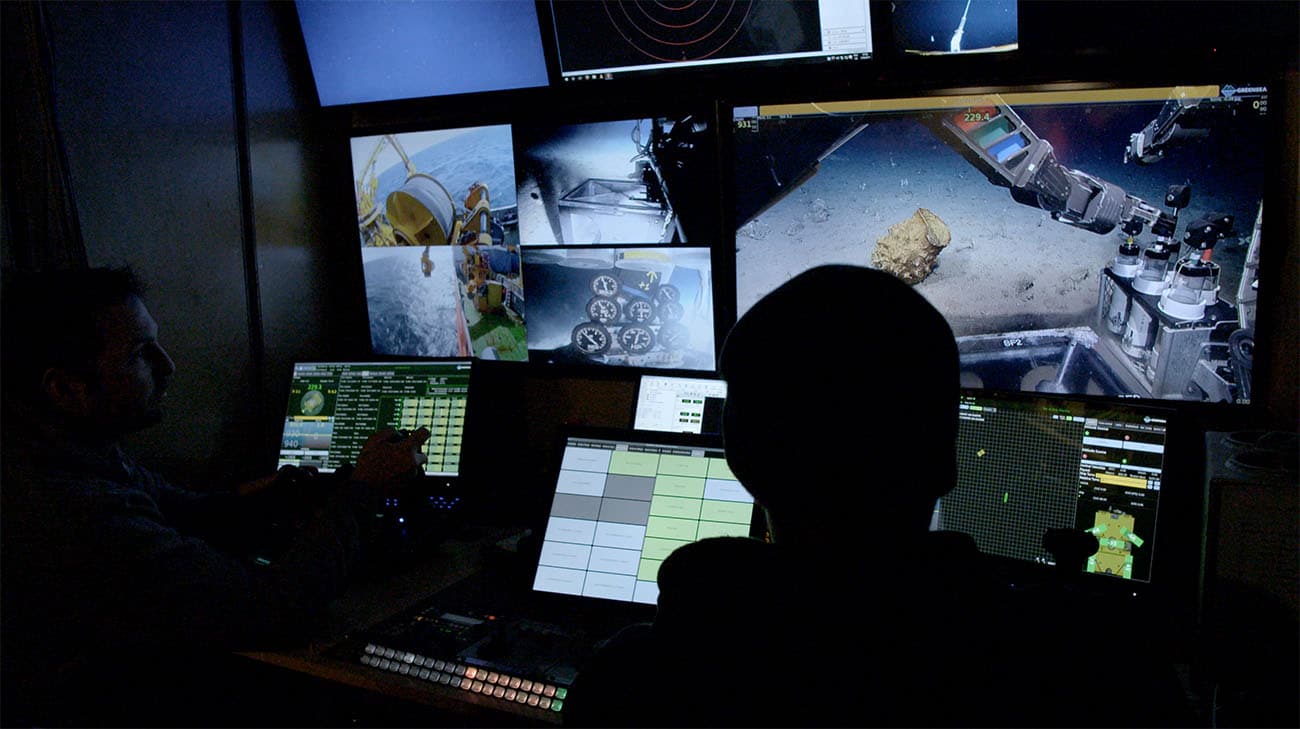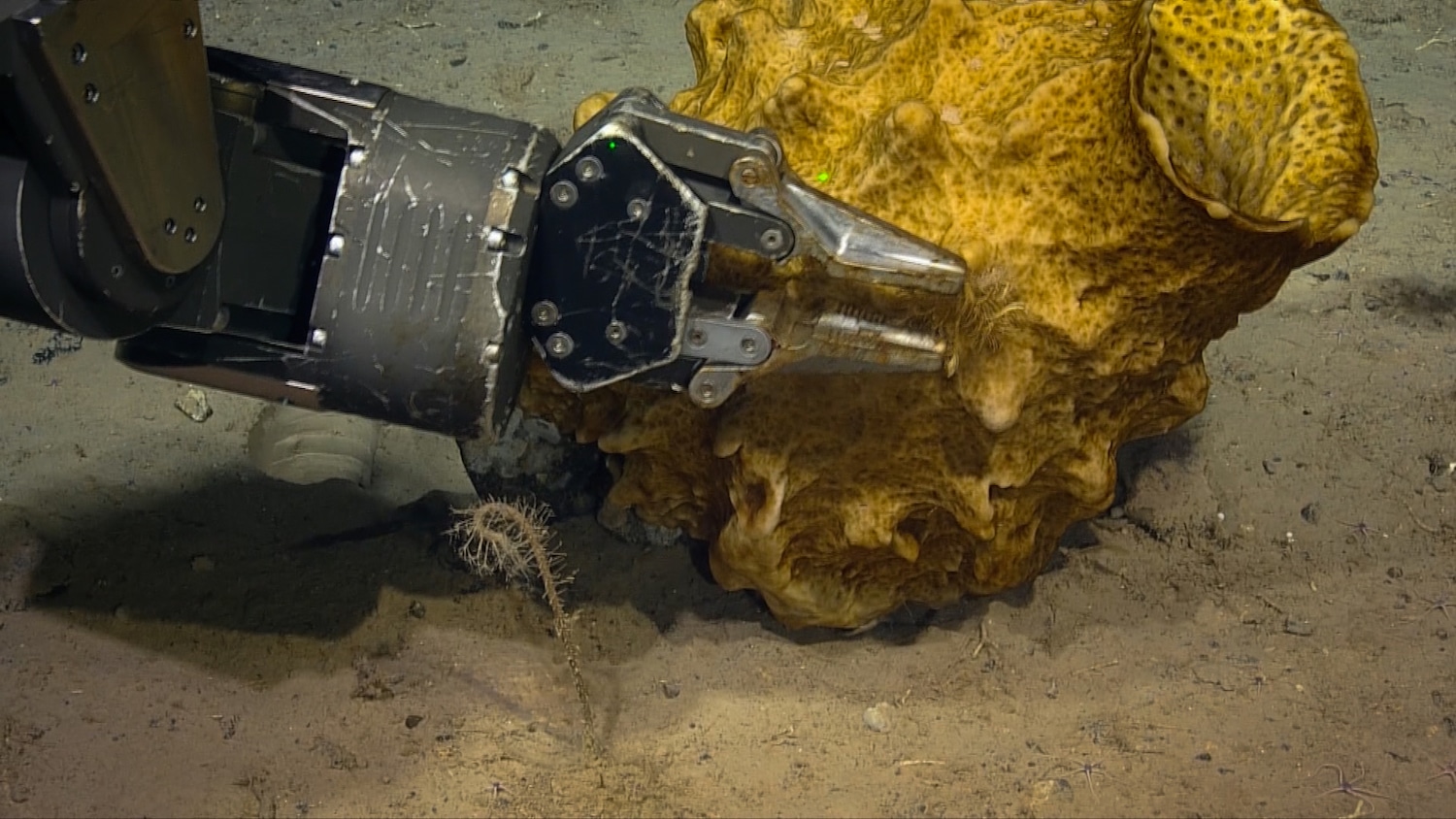by Noé Sardet, Parafilms, EPFL
Par Noé Sardet, Parafilms, EPFL
The first dive beneath the Mertz Glacier was a real challenge. Getting under the glacier would be more difficult than expected. A huge underwater ice cavern stretches below the glacier’s tongue. The whole team was surprised to discover this massive cavity below the high frozen cliffs. The cavern roof is covered with rough ice, and the sonar of the ROPOS (for Remotely Operated Platform for Ocean Sciences) showed that the cavity stretched over 300m ahead and was very wide.
La première plongée sous le glacier Mertz est un véritable défi. Elle va s’avérer plus difficile que prévu. Une caverne de glace géante, submergée, se prolonge sous la langue du glacier. C’est une surprise pour toute l’équipe de découvrir ce trou béant sous ces hautes falaises gelées ! Le plafond de cette caverne est une structure de glace très inégale. Le sonar du ROPOS révèle que la cavité s’étend sur plus de 300m à l’avant du submersible et toujours rien sur les côtés.
These are risky conditions for operating the submersible – it’s hard to navigate blind – and tensions rose on the ship. The dive was then cancelled and the submersible brought back. All was not lost, however, as temperature, salinity and oxygen readings had been taken in the water column. The researchers will use this data to form hypotheses on how the cavern formed: Was it a result of erosion or melting? The team of scientists hasn’t ruled anything out. Analyzing the data, they discovered that the temperature in the cavern was 0.2°C higher than in the outside water. Was this a lead? It’s too soon to tell.
Dans ces conditions, la plongée s’avère risquée et la navigation à l’aveugle périlleuse. La tension monte sur le navire. L’opération est finalement annulée et l’engin rapatrié. Cet essai a néanmoins permis de récolter les valeurs de température, de salinité et d’oxygène de la colonne d’eau et permettront d’avancer certaines hypothèses sur les particularités des parois de glace: érosion ou fonte ? Toutes les pistes sont encore à explorer par l’équipe scientifique. En décortiquant les données, ils découvrent que la température dans la cavité et supérieur de 0.2°C à celle de l’eau libre. Une découverte? Trop tôt pour se prononcer…



